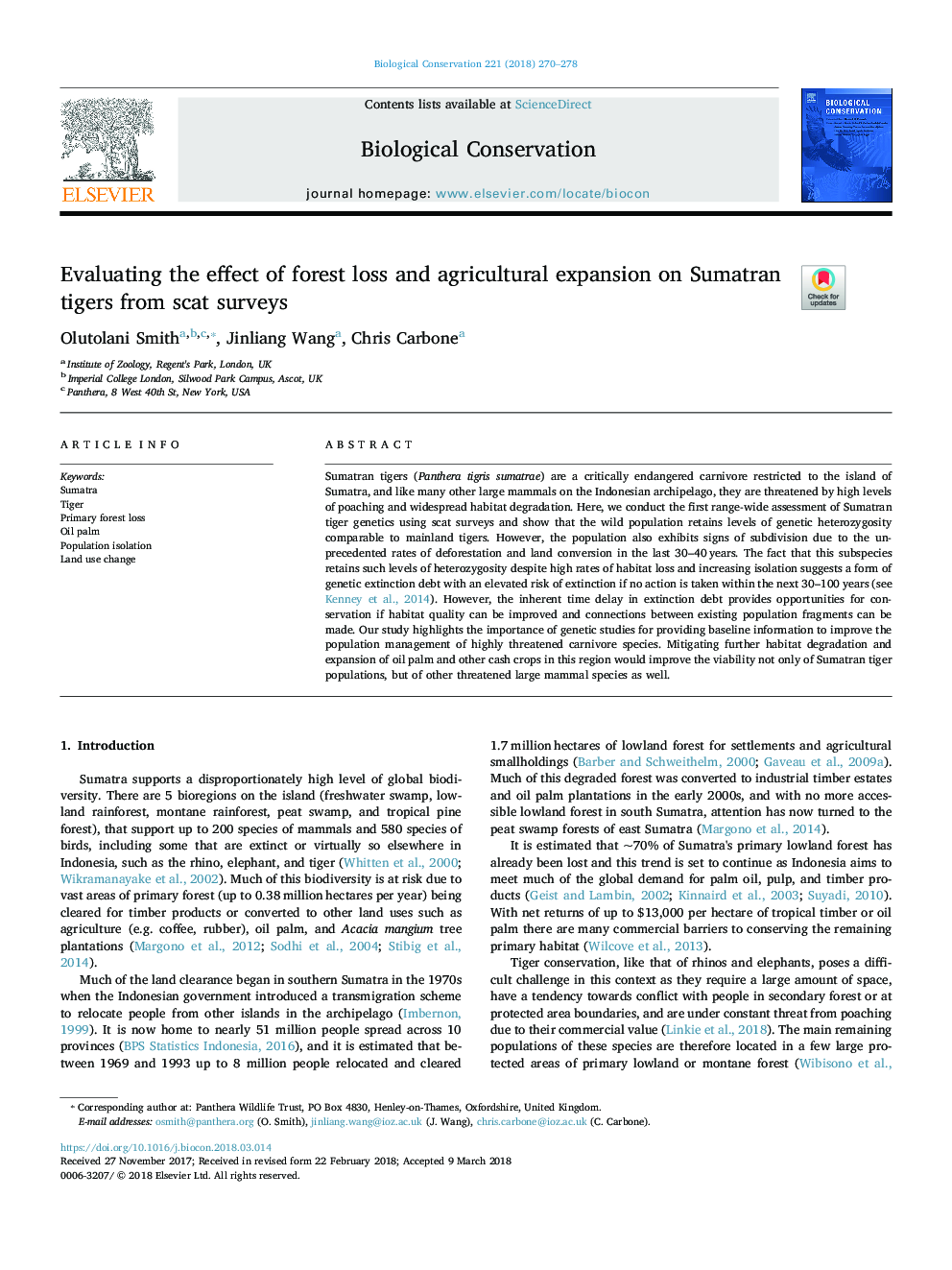| Article ID | Journal | Published Year | Pages | File Type |
|---|---|---|---|---|
| 8847337 | Biological Conservation | 2018 | 9 Pages |
Abstract
Sumatran tigers (Panthera tigris sumatrae) are a critically endangered carnivore restricted to the island of Sumatra, and like many other large mammals on the Indonesian archipelago, they are threatened by high levels of poaching and widespread habitat degradation. Here, we conduct the first range-wide assessment of Sumatran tiger genetics using scat surveys and show that the wild population retains levels of genetic heterozygosity comparable to mainland tigers. However, the population also exhibits signs of subdivision due to the unprecedented rates of deforestation and land conversion in the last 30-40â¯years. The fact that this subspecies retains such levels of heterozygosity despite high rates of habitat loss and increasing isolation suggests a form of genetic extinction debt with an elevated risk of extinction if no action is taken within the next 30-100â¯years (see Kenney et al., 2014). However, the inherent time delay in extinction debt provides opportunities for conservation if habitat quality can be improved and connections between existing population fragments can be made. Our study highlights the importance of genetic studies for providing baseline information to improve the population management of highly threatened carnivore species. Mitigating further habitat degradation and expansion of oil palm and other cash crops in this region would improve the viability not only of Sumatran tiger populations, but of other threatened large mammal species as well.
Related Topics
Life Sciences
Agricultural and Biological Sciences
Ecology, Evolution, Behavior and Systematics
Authors
Olutolani Smith, Jinliang Wang, Chris Carbone,
